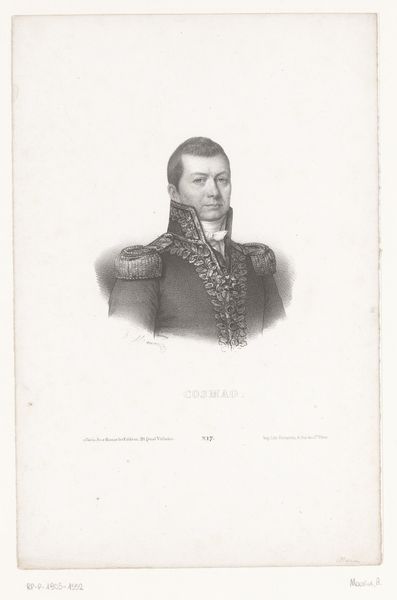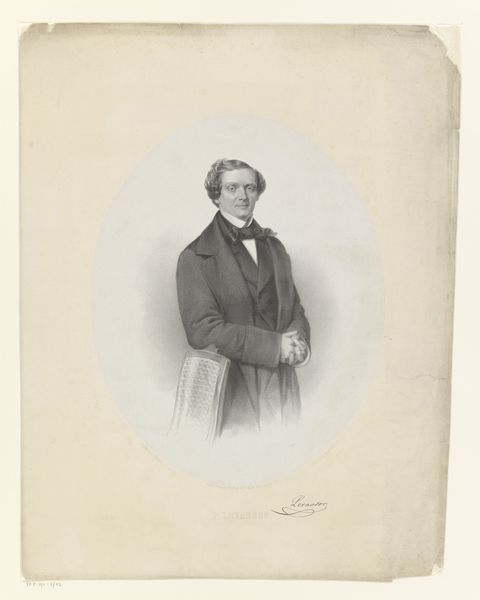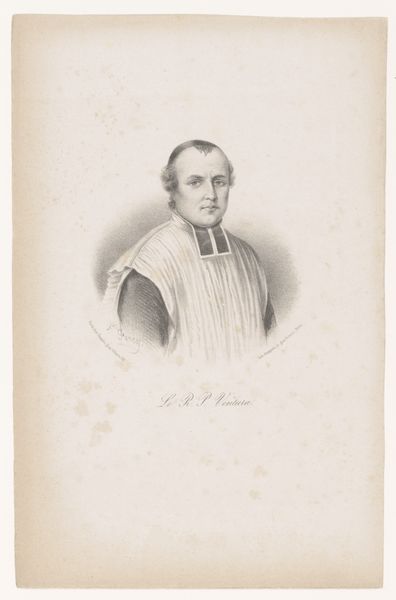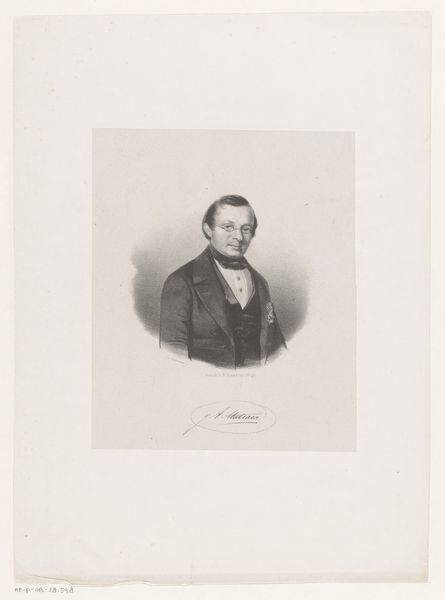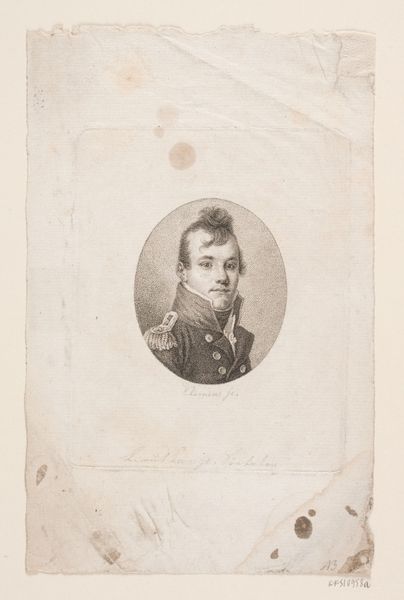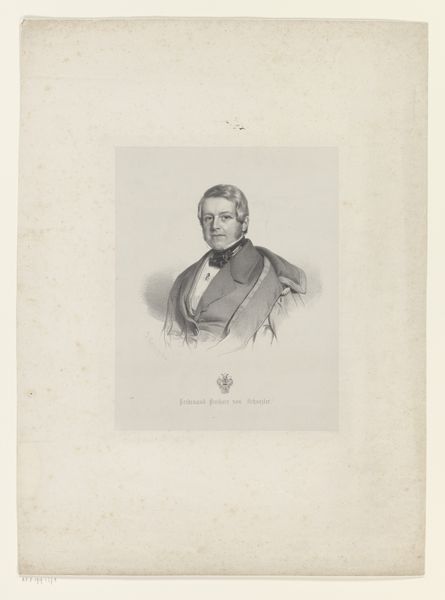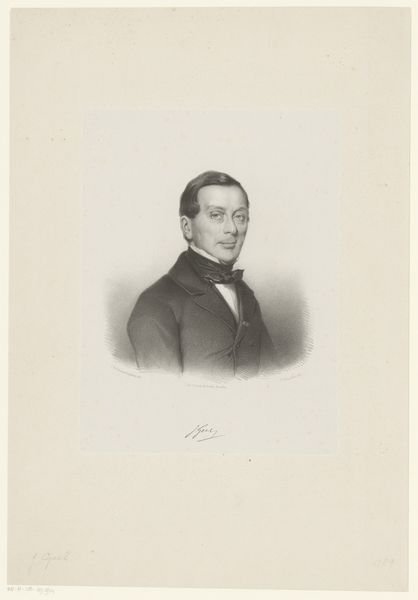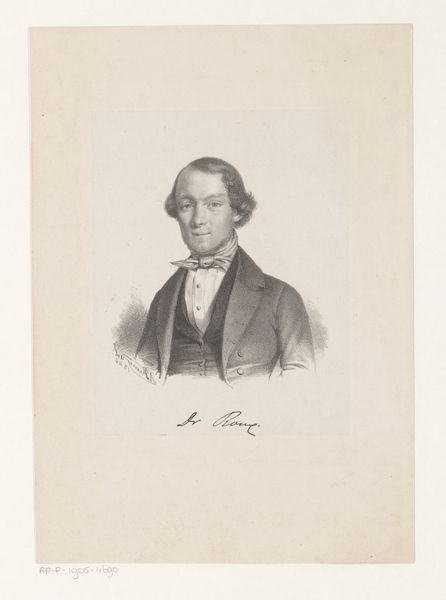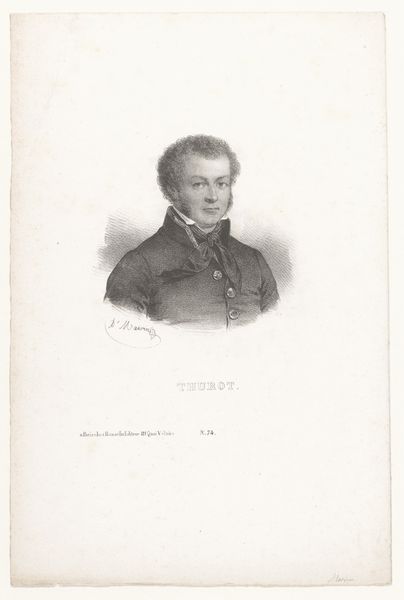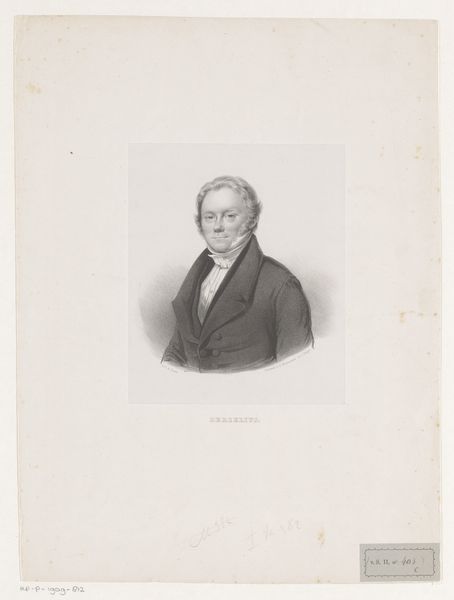
print, engraving
#
portrait
# print
#
academic-art
#
engraving
#
realism
Dimensions: height 276 mm, width 181 mm
Copyright: Rijks Museum: Open Domain
Here we see Alphonse Farcy's portrait of Charlemagne de Maupas, meticulously rendered as a lithograph. Consider the context: Maupas was a figure of authority in mid-19th century France, a period of political upheaval and social change. As Prefect of Police during the Second Empire, Maupas was instrumental in the 1851 coup d'état that brought Louis-Napoléon Bonaparte to power. This portrait, therefore, is not just an image of a man, but a statement of power and authority. Notice how Maupas is depicted: his confident gaze, the elaborate details of his uniform, and the medals adorning his chest all speak to his status and influence. Yet, there's also a certain vulnerability in his expression, a hint of the human being beneath the trappings of power. Farcy’s composition sits within traditional portraiture, but hints at the complexities beneath a powerful man. Reflect on the fact that this image captures a man who was both a symbol of order and an agent of political repression. What does it mean to memorialize such a figure through art? What narratives are we preserving, and whose stories are left untold?
Comments
No comments
Be the first to comment and join the conversation on the ultimate creative platform.

